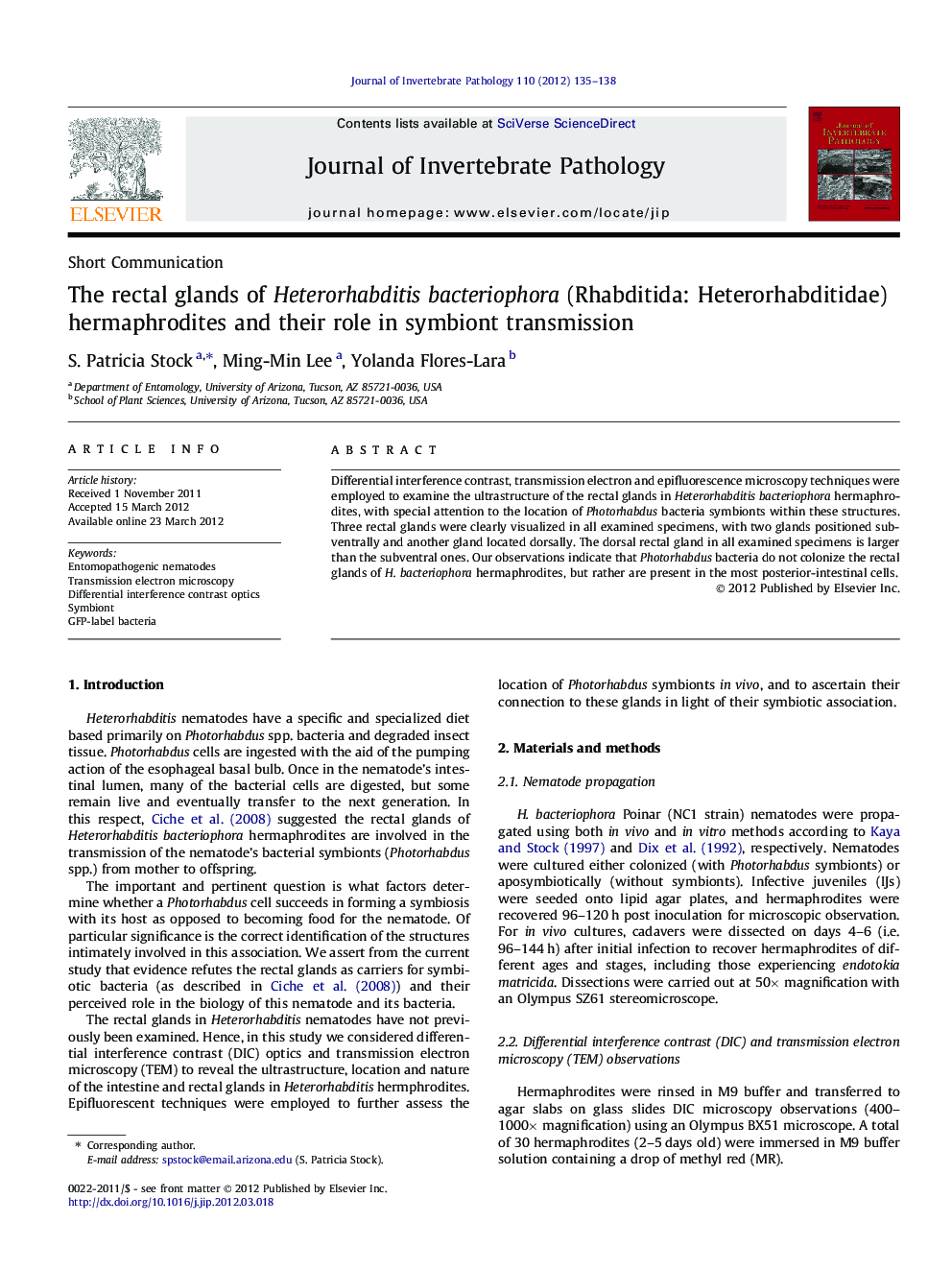| Article ID | Journal | Published Year | Pages | File Type |
|---|---|---|---|---|
| 4557935 | Journal of Invertebrate Pathology | 2012 | 4 Pages |
Differential interference contrast, transmission electron and epifluorescence microscopy techniques were employed to examine the ultrastructure of the rectal glands in Heterorhabditis bacteriophora hermaphrodites, with special attention to the location of Photorhabdus bacteria symbionts within these structures. Three rectal glands were clearly visualized in all examined specimens, with two glands positioned sub-ventrally and another gland located dorsally. The dorsal rectal gland in all examined specimens is larger than the subventral ones. Our observations indicate that Photorhabdus bacteria do not colonize the rectal glands of H. bacteriophora hermaphrodites, but rather are present in the most posterior-intestinal cells.
Graphical abstractFigure optionsDownload full-size imageDownload as PowerPoint slideHighlights► Three rectal glands present with terminal portion opening into the rectum by means of a duct. ► Rectal glands of Heterorhabditis hermaphrodites do not harbor Photorhabdus bacteria. ► Posterior intestinal cells contain vacuoles of various sizes harboring bacterial cells.
